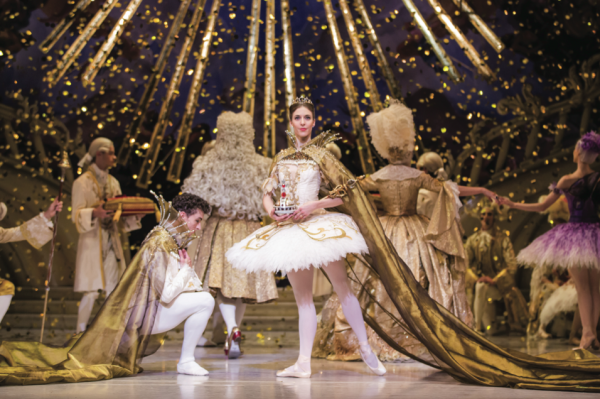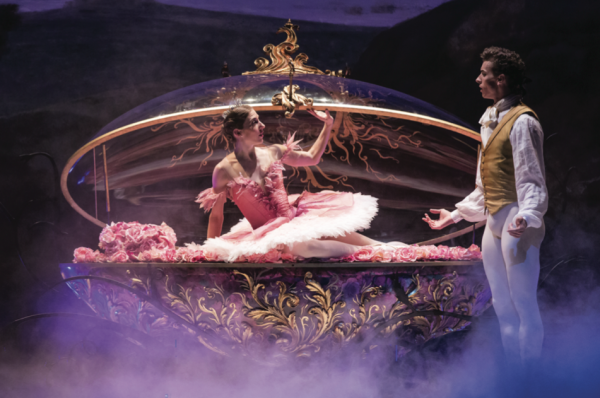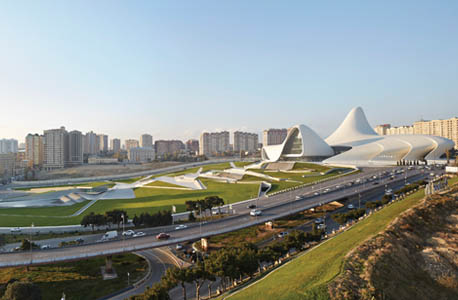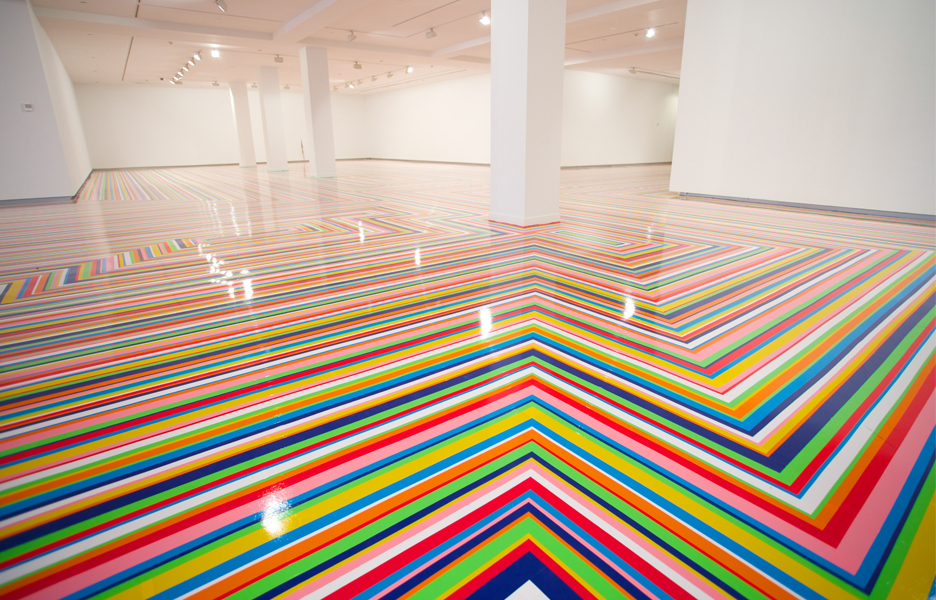
Sublime to sublime: setting the scene for the arts
Share
Written by Gillian Serisier. Above: The Australian Ballet’s 20:21 – Filigree and Shadow, set designer Kelvin Ho, image courtesy The Australian Ballet/Kelvin Ho.
Designing for the ballet is as much about ambiance as the ballet itself. To wit, the most recent productions by the Australian Ballet could not be more different. On the one hand Filigree and Shadow is coolly minimal, while Sleeping Beauty is outlandish, lavish and a visual delight. Yet, both set designs perfectly support the performance, music and style of choreography, while simultaneously acknowledging the era of the original piece, while contextualising the whole to the present.
The lights go down and a slow cool light fills the lower portion of the stage as choreographer Tim Harbour’s Filigree and Shadow takes to the stage. Professing the pursuit of “an extreme of emotion – the kind of emotion that leads to action”, the work is hard line minimalist with sharply defined aggressive angles, energetic synchronisations and the sparse physicality of dynamism. The dance is exceptional. The set, however, is just as extraordinary and completely suited to the ballet. Bare, simple and monumental, a single curved wall inhabits the space to form borders, barriers and a sheer expanse of depth, height and volume.
“The concept of birds in a thunderstorm for me was the idea of all these changes in the physical environment, where the birds are sometimes in harmony, sometimes in tension with the physical surroundings,” says set designer Kelvin Ho, better known to the architecture and design community as the founder of Akin Creative, with a portfolio including store interiors for Sass & Bide, Belinda, Tsubi and Bassike, as well as a plethora of residential and hospitality projects.
To create the set, Ho explored the idea inherent to the title as a continuation of the metaphor of the dance itself. “[It’s] the idea of filigree as decoration and shadow as a more primal subconscious undercurrent. Taking that knowledge and understanding of space, we started with cubes, or forms, and breaking them, shattering them and splitting them. Going through a whole range of iterations and paring them back (and paring them back) so that the visual memory of the performance is very strong: very crisp.”

The Australian Ballet’s Sleeping Beauty, set and costume designer Gabriela Tylesova, photo by Daniel Boud.
Framed by three sharp walls that play on perspective to drive the sight line to the back of the stage, the introduced curve baffles the eye. Sometimes oppressive and diminishing, the wall’s lower volume is all that is visible, while the choreography unfolds the fragility of human emotion. Conversely, as light is excluded from the lower space, the median portion of the wall acts as a buffer, a cocooning element that contains and holds the dancers. Interestingly, the set worked just as well for George Balanchine’s Symphony in Three Movements (Igor Stravinsky), where a buoyant line of minimally dressed ballerinas fills the stage. The cinematic score and burst of action is indeed made sharper and visually defined by the scarcity of the set. As is the extraordinary third portion of 20:21, Twyla Tharp’s In the Upper Room, with score by Phillip Glass where the curved wall contains and intensifies the drama of this perpetually escalating cycle.
Exploring the opposite extreme, Gabriela Tylesova’s set and costumes for Sleeping Beauty are, quite appropriately, completely over the top and delightfully ebullient. Responding to Australian Ballet’s artistic director, David McAllister’s brief for “old-school theatre magic” the sets are gorgeous, sumptuous, layered, amusing, silly, but always beautiful. Importantly, there is no point at which costumes and set part company. Rather, the visual conceit is carried throughout with layered costumes matching layered sets, where massive baroque curtains, with monumental gold tassels and trim, perfectly frame the baroque royalty, who are similarly bedecked in tassels and trim.

The Australian Ballet’s Sleeping Beauty, set and costume designer: Gabriela Tylesova, photo by Daniel Boud.
Yet, if this sounds like a confection of saccharine intensity it is not. Tylesova’s strength is her ability to frame, contextualise and provide light and shadow. This is perhaps flagrantly apparent in the bordering device used to present the kingdom in the manner of fairy-tale book cover illustrations where the magical world is viewed as through a frame – whether of flowers, mist or window. It is a nice motif in that it effectively invites the viewer to depart reality. Moreover, in creating this interior/exterior perspective, the metaphoric shift is dimensionally realised, as demonstrated with the arrival and asides of Carabosse (the villain), who remains both metaphorically and physically outcast from the warmth and glow of the soft pink and gold interior where love presides.
The forays into the forest are signalled by layers of vine that further serve to frame a distant glimpse of the kingdom. Additionally, they contain the action of the ballet and allow the audience to gaze at those fabulously ridiculous fairy hats and all together outlandish costumes.
In both instances, whether flamboyantly frothy or intellectually austere the set works to amplify and elaborate the performance. Each is beautiful, each adds depth and nuance, and each completes the performance. Just as importantly, each creates a visual snapshot or, as Ho posits, “a visual memory”, which coalesces all elements of the ballet into a single and unforgettable experience.
Subscribe to inside magazine today – available now on news stands, or digitally through Zinio.
You Might also Like


















